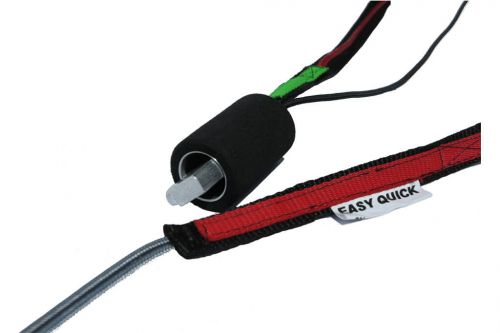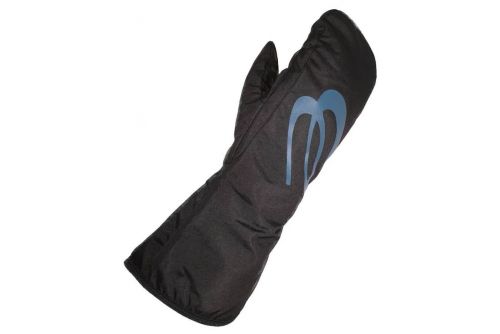The next generation paragliding carabiner with extra safety in dangerous situations: Its quick-release function makes it possible to prevent dangerous interactions between the reserve and the paraglider, and is useful for emergency water landings and high wind conditions on the ground.
The PARALOCK 3 has a new patented locking system that is easy and safe to operate. Moreover, the swivel lever can be additionally blocked if required.
Unlike conventional paragliding carabiners, the Lock of the PARALOCK 3 is form-fit, so the dynamic stress relevant to material fatigue in flight is only a fraction.
It has survived the fatigue test of 2.000 load changes at 525 DaN top load and then 5 million load changes at 240,5 DaN at an accredited materials testing institute without damage. This is equivalent to 5 years of tandem operation with unlimited flight hours. The maximum recommended service life for mono paragliding use is 8 years, with no risk of material fatigue even with extended use.
Overview of the Finsterwalder PARALOCK 3's most important features
- Helpful in emergency situations, as the connection can be released under load.
- Long service life without the problems of material fatigue.
- Intuitive and safe operation with additional blocking option.
- Easy and twist-free installation on almost any harness.
- No need to carry a crosscut knife.
- 2.800 DaN breaking load at only 75 g weight.
* 1 DaN (Dekanewton) = 10 Newton ≈ 1 kg
5 reasons why the paraglider should be disconnected after an emergency parachute deployment
- According to the LTF, the maximum allowed sink rate for paraglider rescue systems is 6.8 m/s, corresponding to 24.5 km/h. However, many pilots are not aware that in the reserve parachute certification process, the sink rate is determined without the paraglider. Interactions between paraglider and rescue system can increase the sink rate substantially – for example, by increased swinging or due to a resulting shear position. The risk of injury increases accordingly.
- Although modern reserve parachutes usually reach maximum sink rates of “only” 5.5 m/s, corresponding to approx. 20 km/h, these values are often only achieved by a lateral drift that generates lift. A paraglider that is not separated or only separated on one side impedes this drift and thus substantially increases the sink rate.
- The possibility to choose the landing site with a steerable rescue system is a significant safety plus. If the main glider is not separated, this safety advantage is foregone.
- It has shown that a separated paraglider usually collapses very quickly and that its salvage is easier. In the case of a tree landing, there is also a much lower risk of damage to the glider when it does not carry the full pilot weight.
- Video of a downplane situation of the paraglider after an emergency parachute deployment
Easy attachment to almost all paraglider harnesses
The V-shaped belt chamber for the harness is designed to correspond to the pulling directions of the main risers and the back strap.
In some pod harnesses, the pod is attached separately (e.g. in the Advance Impress 4). The pod loops can be inserted above the harness chamber separating screw.
Overview of the Finsterwalder PARALOCK's most important features
- Titanal drop forged
- Axle and locking bolt made of hardened chrome steel
- Replacement interval: 8 years with unlimited flight hours, 5 years for tandem paragliding use and use in hang gliders
- Weight: 73 g at a breaking load of 2.800 DaN*
* 1 DaN (Dekanewton) = 10 Newton ≈ 1 kg



